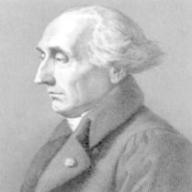有關電的問題 (TO天同)
2011-12-12 11:03 pm
圖片參考:http://imgcld.yimg.com/8/n/HA00414085/o/701112120030013873410240.jpg
If an earthed metal plate is brought near a positively charged metal sphere, the number of charges on the surface of the metal plate increases gradually and tends to equal the number of charges on the sphere's surface. But if it is brought near a positively charged metal plate instead, and whose surface is parallel to its surface, the number of charges on the both surface of the plates would be equal throughout the process and is independent of the separation between them. Why?
回答 (1)
2011-12-13 12:34 am
✔ 最佳答案
The crucial point is that the surface of a metal plate or sphere is an "equipotential surface" and hence, electric field lines of force emerge normally from the surface.In the 1st case (sphere and metal), electric field lines emerging from the sphere radially in all directions before the metal plate is brought in place. When the plate is brought near, induced -ve charges produced on the plate. This "attracts" the filed lines, and hence field lines in the direction of the approaching plate would end up at the induced charges. Field lines in other directions would bend towards the plate but may not terminate on it. Unless the plate is very large (infinitely large), it could not "catch" ALL the field lines emerging from the metal sphere. The induced charges on th plates are thus less than those on the sphere.
However, when the plate is brought nearer and nearer to the sphere, more and more field lines could end up on the plate. This increases the amount of induced charges on the plate.
In the 2nd (parallel plates) case, as said before, electric field lines are emerging perpendicular to the surface. Before the earthed plate is brought near, field lines are going out from the plated in two opposite directions.
When the earthed plate is brought near, there is induced -ve charges on the moving plate. All field lines would be attracted to go in the direction of the moving plate (remember that charges on conductor are mobile). Thus all field lines eventually end up at the moving plate. This indicates that the amount of induced charges equals to the charges on the fixed plate. Further decrease of distance between the two plates would have no effect on the induced charge as it has already reached its maximim amount.
[due to space limit, continue in the "opinion section"]
2011-12-12 16:35:36 補充:
You could look at the diagrams on the following web-page.
http://www.pstcc.edu/departments/natural_behavioral_sciences/Experim%2001.htm
2011-12-12 16:35:50 補充:
In fig 3, you could imagine the striaght line between the two charges is a metal plate. You could observe that unless the plate is very large (i.e. the line is infinitely long), there are field lines not ending up on it.
收錄日期: 2021-04-29 17:45:21
原文連結 [永久失效]:
https://hk.answers.yahoo.com/question/index?qid=20111212000051KK00300

